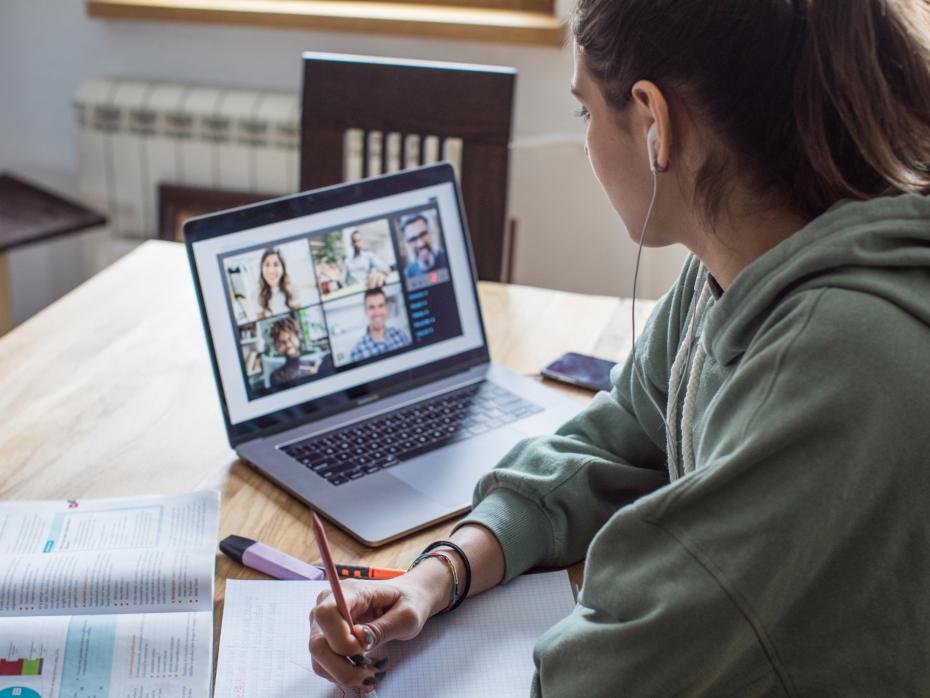
Lessons from navigating the digital pivot
Having reopened for a new academic year, universities are now looking ahead to how they can deliver the best possible online teaching for the longer term. Here, Robert MacIntosh highlights what has been learned so far in the rapid transition to digital teaching and learning

Universities, like every other part of the economy, are suffering from an acute case of what we might call the pandemic-induced digital pivot. We have been forced to rethink how we operate from the ground up. Finishing the final few weeks of a semester online is one thing, but it is an altogether different proposition to contemplate a new academic year that begins, and might end, online. Over the summer months our days were filled with digital meetings that resembled a low-budget reboot of Celebrity Squares.
How, though, do we deliver amazing student experiences online? How do we mimic the immersive, experiential parts of higher education, and how do we support our academic colleagues as we do so? Here are five things we know so far.
Don’t hang onto the bank
Metaphorically speaking, our educational system has fallen into a swirling digital river. One option is to cling to the bank, hoping against hope that we can clamber out and return to familiar patterns and routines as quickly as a pharmaceutical firm can patent a vaccine. While the traditional format of the wise lecturer addressing serried ranks of eager learners has remained largely unchanged for a surprisingly long time, our learners were changing pre-pandemic. Fewer came to lectures than we might like and those who did attend spent at least as much time staring at a screen as they did riveted by their lecturer. Having fallen in, don’t cling to the bank. Try letting go and seeing where the digital currents take you.
Think highlights reel
Occasionally, live sport throws up the match of the decade. More often than not, though, the edited highlights offer a far more time-efficient way of catching the key moments. The same might apply to your lectures. Just because you would normally fill an hour in the lecture theatre doesn’t mean that the content should fill an hour of digital time. Stripped of what stand-up comedians call crowd work, you might find that the key messages can be condensed to half or even a third of the time. Don’t fill the rest of the available space with repetition and waffle. Deliver an excellent chunk of learning and use the rest of the time for unscripted, live interaction, possibly as a separate activity altogether.
Get yourself a teaching buddy
We often work in teaching teams, but pre-pandemic very few things would warrant two members of staff in the same lecture theatre at the same time. The digital pivot might bring the need to revisit the idea of the lone scholar. Having someone field the questions in the chat facility while you screen-share a presentation is a practical solution. There is the added bonus of a back-up lest one of you suffer the indignity of a wi-fi wipe-out. And if you do team-teach, you can reflect on what seems to be working well and less well in your efforts to engage your students. Yes, some inefficiencies are at play but there are other serious benefits to team-teaching in Teams, or indeed any other digital platform.
Take as many takes as it takes
Pre-recording your lectures doesn’t seem that difficult, does it? You may have accumulated a few decades of lecturing experience and you know exactly how to hook your audience’s attention. But suddenly, confronted with a tiny camera and no audience, you realise that lecturing is not the same as being a TV news anchor. The relative freedom of live performance is replaced with the terror that your every hesitation and mispronunciation is captured for posterity. Maybe a script will help. Maybe consider using one of those free autocue websites. Or maybe you’re happier improvising. Find what works for you and remember that you can also do another take if the doorbell goes mid-sentence.
Rethink the whole, not just the lecture
It isn’t sufficient to simply swap out an actual lecture for a digital one. Think of the parts of the learning process that surround lectures. Breaking into smaller groups for discussions during the lecture, following up the lecture with a smaller tutorial group discussion or even the assessment design itself. If you know in advance that traditional in-person, invigilated exams might not be allowed at the end of the semester, aim for something different from the outset. Take-home exams, case studies, essays or digitally proctored exams may be more appropriate, but only if the whole learning experience is aligned to these choices. Think contingency plans. Think assessing the whole suite of learning outcomes. Think academic integrity. But, most of all, think about it before you start.
Robert MacIntosh is professor of strategic management and head of the School of Social Sciences at . He is also chair of the Chartered Association of Business Schools.


